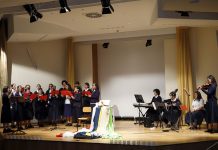Rome (Italy). On 22 September the liturgical calendar of the Salesian Family indicates the memorial of Blessed Giuseppe Calasanz Marqués and Enrico Sáiz Aparicio, priests and companion martyrs. This is a group of 95 lay people, religious, and priests imprisoned and murdered, who had the courage to be faithful to their Christian faith and Salesian vocation, demonstrating trust in God and forgiveness towards their murderers. They died between July 1936 and April 1938 and together with 138 other martyrs from other religious families, they were beatified by John Paul II on 11 March 2001.
Among them, there were two Daughters of Mary Help of Christians of the Sarrià Community of Barcelona: Sister Maria Carmen Moreno Benitez (Villamartin, Spain, 24 August 1885 – Barcelona, Spain, 1 September 1936) and Sister Maria Amparo Carbonell Munoz (Alboraya, Spain, 9 November 1893 – Barcelona, Spain, 1 September 1936).
In 1936, at the outbreak of the Spanish Civil War, Sister Carmen e Sister Amparo were together in the same Community, the first as Vicar, while the second as housekeeper. The Community was made up of Sisters, Novices, and resident girls who, in consideration of the serious dangerous situation, were advised by the Superiors to go to relatives, wear civilian clothes, and to leave for Italy as soon as possible.
Sister Carmen and Sister Amparo instead chose to stay to assist a Sister who had just undergone cancer surgery, but on the night of 1 September, all three were arrested. At dawn on 1 September, the cell doors opened. The patient was released, while the other two Sisters were taken to the city’s hippodrome near the sea, where they were shot.
In the homily of the Beatification, which took place on the Sunday of Lent in which the Gospel of the Transfiguration is read, Saint John Paul II affirms:
“The lives of the saints and the testimony of the martyrs teach us that, if the transfiguration of the body will take place at the end of time with the resurrection of the flesh, that of the heart takes place now on this earth, with the help of grace. We can ask ourselves, Who are the ‘transfigured’ men and women? The answer is very beautiful. They are those who follow Christ in His life and death, are inspired by Him, and allow themselves to be flooded by the grace that He gives us. They are those whose nourishment is to do the will of the Father; those who let themselves be guided by the Spirit. They are those who put nothing before the Kingdom of Christ; who love others to the point of shedding their blood for them. They are those who are willing to give everything without demanding anything in return; those who, in short, live loving and die forgiving.”
He adds, “The testimonies that have reached us speak of honest and exemplary people, whose martyrdom sealed lives interwoven with work, prayer, and religious commitment in their families, parishes, and religious congregations. Many of them already enjoyed a reputation for holiness among their fellow citizens during their lives. It can be said that their exemplary conduct was a preparation for that supreme profession of faith which is martyrdom.”
These two Daughters of Mary Help of Christians probably had a path common to many other Sisters and certainly did not imagine being called to martyrdom, a special vocation within the Salesian one. The ordinariness of their life, however, was marked by the extraordinary nature of their availability to the action of the Holy Spirit, to the love of God the Father, “who gives the defenseless the strength of martyrdom” (Preface of the Martyrs).
It is this light that we too can welcome today; a faith that dares the impossible and that overcomes violence with the courage of faithfulness to the love received.




















